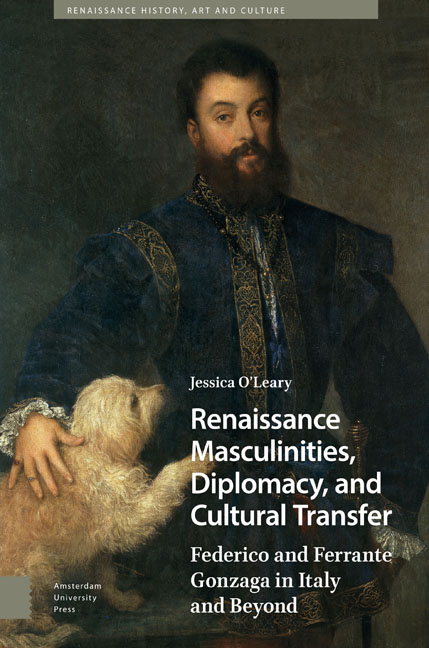 Renaissance Masculinities, Diplomacy, and Cultural Transfer
Renaissance Masculinities, Diplomacy, and Cultural Transfer Book contents
- Frontmatter
- Contents
- Acknowledgements
- Abbreviations
- Maps and Figures
- Introduction
- 1 Crisis Diplomacies in the Italian Wars
- 2 Warring Masculinities
- 3 Imperial Masculinities
- 4 Diplomacy of Magnificence
- 5 Imperial Networks and Loyalties
- 6 Interpretations of Renaissance Masculinities
- Conclusion
- Bibliography
- Index
Introduction
Published online by Cambridge University Press: 08 May 2024
- Frontmatter
- Contents
- Acknowledgements
- Abbreviations
- Maps and Figures
- Introduction
- 1 Crisis Diplomacies in the Italian Wars
- 2 Warring Masculinities
- 3 Imperial Masculinities
- 4 Diplomacy of Magnificence
- 5 Imperial Networks and Loyalties
- 6 Interpretations of Renaissance Masculinities
- Conclusion
- Bibliography
- Index
Summary
On October 21, 1515, a fifteen-year-old Federico Gonzaga (1500–1540) arrived in Milan to pay homage to Francis I (1494–1547), King of France. Federico was the heir to the Marquisate of Mantua, a small principality located 150 kilometres to the east of Milan. His voyage likely took him several days and required the use of one of his father's gilded state barges to transport his household of fifty servants and forty-one horses. Francis was in Italy to continue his predecessors’ attempts to conquer parts of the Italian peninsula in a conflict that became known as the Italian Wars (1494–1559).
In September 1515, Francis had expelled the Duchy of Milan's former ruler, Massimiliano Sforza, in a pivotal battle and had taken up residence in the Sforza Castle. When Federico arrived in Milan, he met with his French cousin, Charles of Bourbon (1490–1527), the Constable of France, who took Federico to meet the monarch. Attentive to protocol, Federico tried to kiss the king's hand, but Francis rose to his full six feet and pulled the boy into a tight embrace. It is unknown if the informal greeting was disconcerting for Federico, but he was able to discharge his filial duty satisfactorily by delivering a message from his father, Francesco II Gonzaga (1466–1519), that expressed the marquis's regret that he was unable to pay homage to His Majesty personally. Federico expected his stay to be brief and had already made plans to be home for Christmas. However, the prolonged conflict between Francis I and the Holy Roman Emperor, Maximilian I (1459–1519), meant that he did not see his parents again until the spring of 1517.
Almost a decade later, Federico's sixteen-year-old brother, Ferrante (1507–1557), arrived at the Castilian city of Valladolid to fulfil a similar obligation to the new, youthful Holy Roman Emperor, Charles V (1500–1558). To reach the Castilian court from Mantua, however, required a much longer and arduous journey. Ferrante left Mantua sometime in May 1523 and travelled to Genoa before sailing west across the Mediterranean, eventually reaching Barcelona in late June. Unfortunately, the twenty-three-year-old emperor was some 750 kilometres to the northwest. Notwithstanding the unforgiving Spanish summer, a lack of mules, the cost of grain, and two servants dying of the plague, Ferrante and his small entourage finally caught up to the emperor's court in July.
- Type
- Chapter
- Information
- Renaissance Masculinities, Diplomacy, and Cultural TransferFederico and Ferrante Gonzaga in Italy and Beyond, pp. 15 - 32Publisher: Amsterdam University PressPrint publication year: 2024
